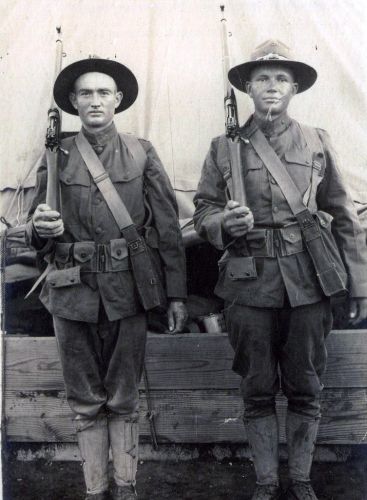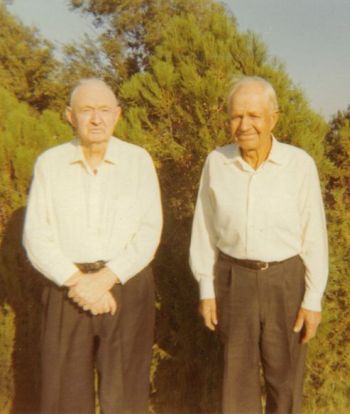None of my ancestors arrived on the Mayflower, at least not as far as I know, but many of them came to America, like the Pilgrims, to escape religious persecution or upheaval in Europe. Today I will begin a new series in this blog on those immigrant ancestors about which I already know. Future information I learn through research will be documented later.
Hans Bielmann is one of my earliest immigrant ancestors on my father’s side. He was born in Biberach, Württemberg, Prussia (Germany) on 11 September 1703, according to family records. He married Anna Maria Bentz at the Lutheran church in Biberach on 23 November 1734 (Happy Anniversary!). He emigrated to America in 1736 on the ship Princess Augustus out of Rotterdam to Philadelphia. I do not know his precise reasons for emigrating, but there was a large wave of emigration out of what would become Germany in the early 1700’s following wars with the French and Spanish. I found a wonderful account of the voyage of the Princess Augustus by a passenger named Durs Thommen. I preserved all spellings given on the original site, which will account for some possible misspellings (with the exception of obvious typos) or inconsistent spellings.
Philadelphia, October 20, 1736
My friendly greetings and service to you, my much beloved Reverent Mr. Candidate Annoni and your beloved wife Ester Annoni, born in Zwingerin.
I cannot desist from writing to you and to tell you in a few words that I with my family — the loving faithful Father in Heaven be praised for that — have come into this land fresh and healthy. But at sea our two younger sons became sick with ship fever but, thank God, have regained their previous health. But I now know nothing further to write because we have come so late into this country and everything has already been harvested.
As to the journey, we were detained for 5 weeks, have slept on the Rhine for 2 weeks and travelled from Rotterdam across the sea for 12 weeks and 4 days until Philadelphia, but only 8 weeks from land to land, and we did not have good wind save for 8 days, more contrary winds than side wind. And as we saw land a new pilot came to us and we thought all was well and won. All evening we got good wind from behind so that the ship moved vigorously. The new pilot, however made cast anchor because it was not far (from there) dangerous; in the morning when the anchor was lifted again and on had barely gone 30 feet the boat ran into a rock, and it crashed that one thought it would break in the middle. The anxious crying began, and one could see where there was faith or not. Then the captain had a warning shot fired and had a flag of distress hoisted, but we drove far out to the sea so that we saw no land anymore for days and even thought we would never see it again.
As far as illness are comcerned, the Mannheim skippers had two of the boats sidewise together; in the one besides ours 7 children died of small pox and a woman of spotted fever, and in our boat 19 people died until Rotterdam. Those people who have means and are interested in this land and need not go into debt, those I advise to stay where they are because the journy is onerous and very dangeous. Thus who wants to come to this land shall be well provided with butter and bacon, dried apple snips and plums, and flour, wine and brandy and dried bread, tea and sugar. And if young people come and cannot pay fare, there are enough people to redeem them from the boat, and they must serve them a certain time for it. There are people with whom I have talked myself who had brought not a penny into the land and had to serve for their fare, now (they) are very rich people. But I do not know to write much of the land because we came into it quite late and everything had already been harvested, and one should not rely much on the talk of other people, thus I am willing, if it were to please the Lord in Heaven, to send very accurate news in the future when I have investigated things my self.
But I have not yet taken up the land, but I am also willing to wait until I know the land better or have approached trusted friends so that I may believe them. I could have already taken up, however, more than to 3 to 400 acres that have been much planted, and there would remain in my hands quite a good portion of my imported wealth. What has already been cleared of that place, meadow and fields, is for 6 horses, 8 cows, 12 goats, 14 pigs. We are very sorry that at home we have not lived according to Christ’s demand on occasion as we should have done.
Durs Thommen formerly of Niederdorff your servant
From: “On The power O Pietism” by Leo Schelbert, PhD in the “Historic Scaefferstown Record” vol 17, Issues No 3 & 4.
Hans Bielmann’s wife Anna Bentz Bielmann and their daughter Elizabeth Katharina were not listed on the passenger manifest, but they were most likely on the ship with Hans, as the names of women and children were not always listed. Hans settled in Pennsylvania Dutch country, where many refugees from the Rhineland Palatinate settled in the early 1700’s.
Once the Bielmanns settled in Bucks County, Pennsylvania, their family grew and they changed the spelling of their last name to Billman. In 1930, Bielmann descendant F.W. Billman prepared a hand-drawn family tree that is still in existence. Included with a tree was a brief history of Hans David Bielmann:
Hans David Bilmann Entered at Phila Sept 16, 1736. Ship Princess Augustus. Sailed from Rotterdam Aged 31 yrs. Warr 200
A 1738 W 150A 1744 Lynn Twp. Northampton Co Pa. His wife and 2 children killed and 1 son wounded by Indians March 1756. Marr-Elizabeth ___, by Oct 1757. Witness to will in 1761 __ . Acted as Spons in 1757, 1759,
1761__. Elder in Albany Church 1757. Constable Albany District 1752 __. Spons for David HESS. Oct 1757.
Of course, I am extremely curious about his troubles with the Indians. Upon finding this notation, I began digging, and it would appear that it is fairly well-established family lore that Anna Maria and two of the couple’s sons were indeed killed in an Indian raid. I can find little information on this attack. However, it is probable that the attacks were part of the larger conflict and hosilities surrounding the French and Indian War, which began in 1754. (Learn more about this conflict’s effect on Lehigh Township here — pdf).
I was able to learn interesting tidbits of information about my ancestor’s life. For instance, in 1759, he petitioned the court to excuse a fine imposed upon him for selling “Cyder.” He had been granted a permit only to sell brandy; however, he explained to the court that he sold the cider out of hardship following the Indian attack upon his home, adding that his wife and two children were murdered and most of his personal effects had been taken by the Indians (The Billman Family). I have also learned that DNA testing has proven that the line of Dewalt Billman (Hans Theobald Billman) does not descend from Hans David, as was previously believed (and, not surprisingly, still widely disseminated all over the Internet).
In many ways, it is remarkable I was able to find my connection to the Bielmann family. My paternal grandfather, David Edwin Swier, was adopted at the age of nine by the Swier family, who were late-nineteenth century Dutch emigrants from Bovenkarspel, Noord Holland in the Netherlands. After my grandfather passed away, I learned from his obituary that his birth name had been Edwin Guy Gearhart, and that his birth parents were Omar Alfred Gearhart and Gertrude Nettie Perkins. I wrote a query about the Gearharts at a genealogy forum for the Gearhart family and connected with a descendant from my grandfather’s brother who told me their story. Subsequent research has enabled me to trace my grandfather’s birth family. My connection to the Bielmanns can be demonstrated thusly:
Dana Michelle Swier
+ Thomas Ray Swier
++ David Edwin Swier, né Edwin Guy Gearhart (1921-2001)
+++ Omar Alfred Gearhart (1884-1930)
++++ George Douglas Gearhart (1860-1929)
+++++ Conrad L. Gearhart (1838-1899)
++++++ Henry Gearhart (1811-?) and Elizabeth Billman (1814-1870)
Both Henry Gearhart and Elizabeth Billman descend from Hans David Bielmann. Continuing the line with Henry Gearhart:
++++++ Henry Gearhart (1811-?)
+++++++ Sarah Billman (1790-1863)
++++++++ Conrad Bielmann (1764-1830)
+++++++++ Conrad Bielmann (1739/1740-1797)
++++++++++ Hans David Bielmann (1703-1768)
And continuing the line with Elizabeth Billman:
++++++ Elizabeth Billman (1814-1870)
+++++++ Johann Henry Bielmann (1776-1854)
++++++++ Conrad Bielmann (1739/1740-1797)
+++++++++ Hans David Bielmann (1703-1768)
I can only imagine how difficult Hans David Bielmann’s life must have been — from his birth in the midst of turmoil in the Palatinate to his death in the foment of the American Revolution. I have to admire his fortitude, for his life on the frontier was harder than anything I can imagine.
This post is part one of a series about my known immigrant ancestors in America.

 My great-grandfather Herman Cunningham, kept a diary of sorts during his tenure in the U.S. Army in World War I. My Aunt Carolyn, Herman Cunningham’s youngest daughter, sent me the following. Note: I’m not sure if this is the entire diary or an excerpt.
My great-grandfather Herman Cunningham, kept a diary of sorts during his tenure in the U.S. Army in World War I. My Aunt Carolyn, Herman Cunningham’s youngest daughter, sent me the following. Note: I’m not sure if this is the entire diary or an excerpt.






